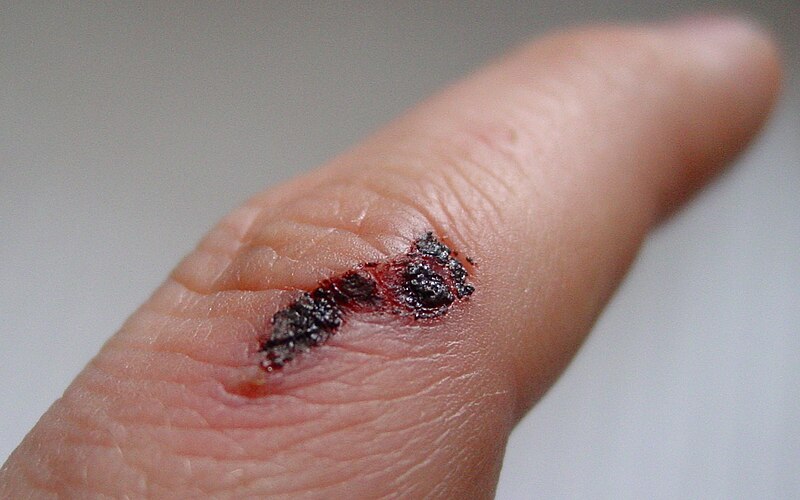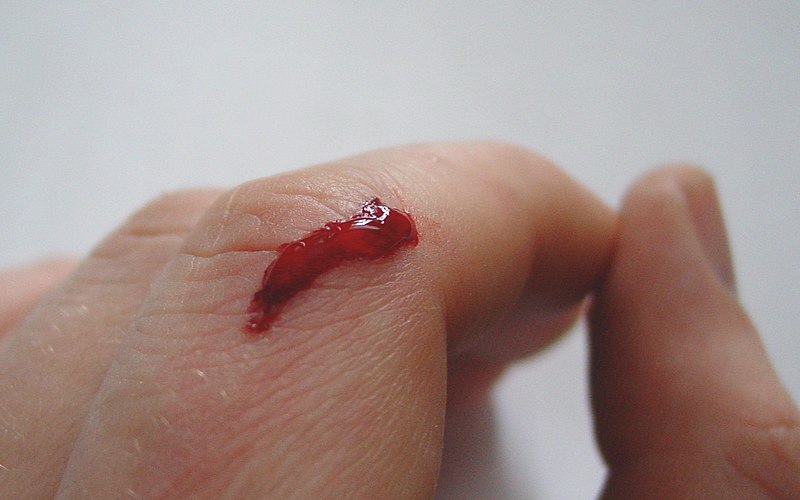An exudate is a fluid emitted by an organism through pores or a wound, a process known as exuding. Exudates include sweat, blood, plant sap, root exudates and microbial exudates. Composition of an exudate varies, but generally includes water and the dissolved solutes of the main circulatory fluid such as sap or blood. In the case of blood it will contain some or all plasma proteins, white blood cells, platelets, and in the case of local vascular damage, red blood cells. In plants, it can be a healing and defensive response to repel insect attack, or it can be an offensive habit to repel other incompatible or competitive plants. Organisms that feed on exudate are known as exudativores; for example, the Vampire Bat exhibits hematophagy, and the Pygmy marmoset is an obligate gummivore (primarily eats tree gum).
Etymology

Exudate is derived from exude, "to ooze," from the Latin exsÅ«dÄre, "to (ooze) out like sweat" (ex- "out" and sÅ«dÄre "to sweat").
Medicine

An exudate is any fluid that filters from the circulatory system into lesions or areas of inflammation. It can be a pus-like or clear fluid. When an injury occurs, leaving skin exposed, it leaks out of the blood vessels and into nearby tissues. The fluid is composed of serum, fibrin, and white blood cells. Exudate may ooze from cuts or from areas of infection or inflammation.
Types
- Purulent or suppurative exudate consists of plasma with both active and dead neutrophils, fibrinogen, and necrotic parenchymal cells. This kind of exudate is consistent with more severe infections, and is commonly referred to as pus.
- Fibrinous exudate is composed mainly of fibrinogen and fibrin. It is characteristic of rheumatic carditis, but is seen in all severe injuries such as strep throat and bacterial pneumonia. Fibrinous inflammation is often difficult to resolve due to blood vessels growing into the exudate and filling space that was occupied by fibrin. Often, large amounts of antibiotics are necessary for resolution.
- Catarrhal exudate is seen in the nose and throat and is characterized by a high content of mucus.
- Serous exudate (sometimes classified as serous transudate) is usually seen in mild inflammation, with relatively low protein. Its consistency resembles that of serum, and can usually be seen in certain disease states like tuberculosis. (See below for difference between transudate and exudate)
- Malignant (or cancerous) pleural effusion is effusion where cancer cells are present. It is usually classified as exudate.
Exudates vs. transudates
There is an important distinction between transudates and exudates. Transudates are caused by disturbances of hydrostatic or colloid osmotic pressure, not by inflammation. They have a low protein content in comparison to exudates. Medical distinction between transudates and exudates is through the measurement of the specific gravity of extracted fluid. Specific gravity is used to measure the protein content of the fluid. The higher the specific gravity, the greater the likelihood of capillary permeability changes in relation to body cavities. For example, the specific gravity of the transudate is usually less than 1.012 and a protein content of less than 2Â g/100Â mL (2Â g%). Rivalta test may be used to differentiate an exudate from a transudate. It is not clear if there is a distinction in the difference of transudates and exudates in plants.
Plant exudates

Plant exudates include saps, gums, latex, resin, and sometimes nectar is considered an exudate. Plant roots exude a variety of molecules into the rhizosphere, including acids, sugars, polysaccharides and ectoenzymes; this can account for 40% of root carbon. Exudation of these compounds has various benefits to the plant and to the microorganisms of the rhizosphere.
See also
- Pleural effusion
- Scarless wound healing



Your blog is very nice
BalasHapusWish to see much more like this. Thanks for sharing your information!
spine surgeon in delhi
Amazing post, thanks for sharing this article. I am truly motivated by you for blogging.
BalasHapusHair Transplant Clinic In Gurgaon
very interesting , good job and thanks for sharing such a good blog.
BalasHapusladies hostel near chennai railway station